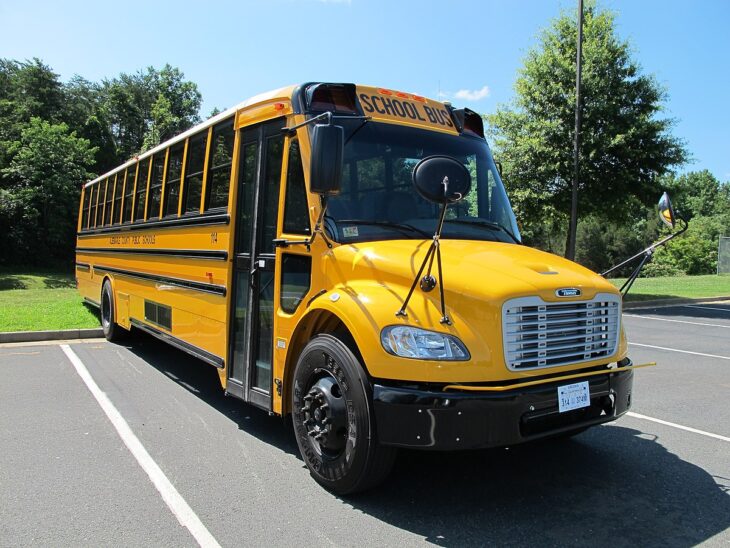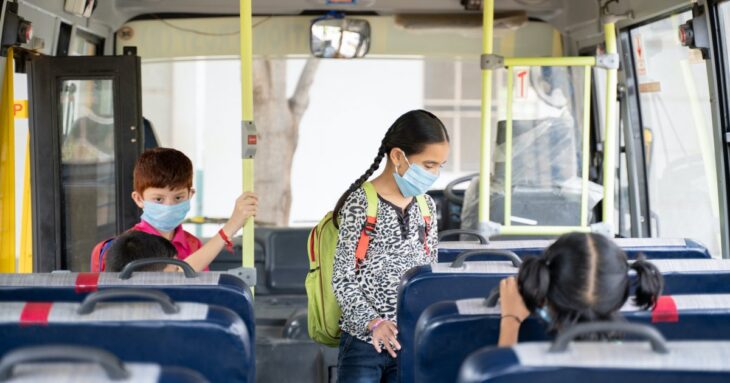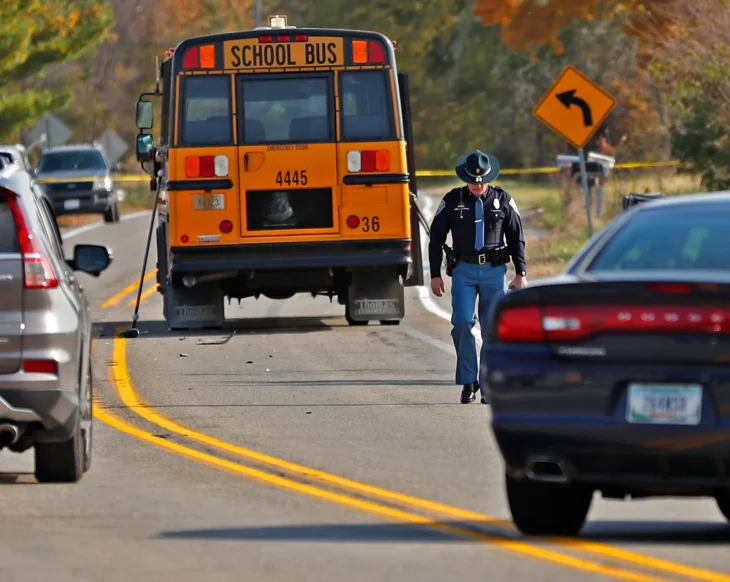If your children ride the school bus, you may feel like you can’t protect them from a collision if it should occur. However, there are plenty of things you can do to keep your children safe. From school bus rules to driver certification checks, you aren’t powerless when it comes to bus safety.
Contents
How to Know Your Child is Safe to Walk to School Alone
The answer to this question isn’t black and white and depends on several factors:
-
Your Child’s Level of Maturity
Does your child know when to ask for help? Are they able to follow directions, be sensible, and be streetwise? Are they able to recognize when an adult is being suspicious? Do they know how to avoid danger?
-
The Length of the Journey
It may take your child a long time to get to the bus stop. The longer it takes to get to the bus stop, the more likely injury will occur.
-
Sidewalks and Intersections
Does your child have to cross a dangerous highway? Are there sidewalks or available pavement for your child to walk on?
-
Neighborhood Safety

Source: en.wikipedia.org
If you live in a high-crime neighborhood, district, or state, consider driving or walking with your child to school, if possible.
-
Number of Children Walking
If you live in a neighborhood with a lot of children, you can pair your child together with a walking group. There’s safety in numbers. If you can ask an older child to walk your kid to the bus stop, that’s even better.
-
Access to Technology
Children who have access to a cell phone can be monitored via GPS. Even if you don’t use GPS, your children will still have a way to call you at any time. Alternatively, you could give your child a loud alarm that alerts other pedestrians.
-
Bus Stop Location or Number of People Waiting
Some parents will drop their child off at the bus stop before going to work. However, if there aren’t a lot of people waiting at the stop or it will take a long time for the bus to show up, it may not be a safe location.
If the bus picks up your child right in front of the house, you won’t have to worry about their safety while walking to school. However, you should still put a few precautions in place if your child walks to a friend’s house after school, goes on a field trip, or plays outside.
How to Keep Your Children Safe On and Off The Bus

Source: nea.org
If your children were already in an accident due to driver negligence, contact a school bus accident lawyer immediately. For example, Abels & Annes can take cases in Chicago.
1. Contact The School for Driver Certification
School bus drivers must graduate high school, be over the age of 18, and hold a commercial driver’s license. They also must pass health, vision, knowledge, and driving exams. All registered school bus drivers must have a clean driving record and pass a background check.
If you’re concerned any of the bus drivers at your child’s school isn’t certified to operate a school bus, speak to the faculty. Ask if their drivers are up to date with their improvement courses. See if they receive periodic re-evaluations for their driving skills, medical exams, and criminal record.
2. Teach Your Children How to Get on the Bus
If your child walks themselves to the bus station, teach them to only cross at pedestrian crossings and warn them of potential dangers, like strange adults or speeding vehicles. Ask them to walk with a friend, but if that isn’t possible, give them a personal alarm or cell phone.
Explain that it’s essential to get to the bus stop 5 minutes before the bus arrives, as it prevents rushing. Tell them to never stand on the road while waiting for the bus, even to wave them down. If they need to cross the street to get to the bus, tell them to wait until the bus stops.
3. Communicate the Buse’s Danger Zones

Source: indystar.com
As a general rule, your children should be 3 meters (or 10 steps) away from the school bus until it comes to a complete stop. If your child can touch the bus, they’re too close. Tell your children to only approach the bus once the door opens and the driver tells them to walk forward.
Even when the bus is at a complete stop, your children shouldn’t be playing around it, shoving, or pushing each other, as they could fall and injure themselves. When near the bus, your children should pay attention to the driver by looking in their direction or making eye contact.
4. Explain How to Ride the Bus Safely
School buses don’t have seat belts, but they’re still safe as long as your child takes their seat property by facing forward at all times. Children should place their bags under their seats or on their laps, keep the aisle of the bus clear, and keep their arms and head inside the bus.
Instruct your children to never throw objects inside the bus, yell, or do anything dangerous, as they may distract the driver. Children should never eat, chew gum, wear perfume, or smoke on the bus because their products or food could cause an allergic reaction or make the bus dirty.
5. Talk About How to Leave the Bus Properly
While your children may be excited to leave the bus, it’s crucial that they don’t leave their seats until the bus comes to a complete stop. When the bus has stopped, tell your children to allow the kids at the front of the bus to leave first and to not push or shove their way through.
When it’s your child’s turn, explain that they should walk off the bus. Explain that they should grab the railing and walk 3 meters away from the bus and only cross the street when the driver gives the signal. Tell your child to ask an adult to pick up a dropped item near the bus.
